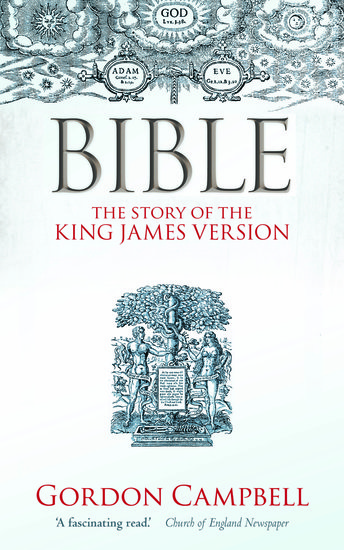By Gordon Campbell
The celebrations of the 400th anniversary of the King James Bible were in one respect a surprise. As the Archbishop of Canterbury commented at the end of the year, the KJB had not been treated “simply as a possession of religious believers,” much less as a “preserve of the Church,” but rather as part of a wider cultural legacy throughout the English-speaking world. This did not reflect, in the Archbishop’s tolerant view, a diminution of the Bible’s standing as a sacred text, but rather extended its significance beyond the spiritual to the cultural sphere.
No one would mount the same argument for modern translations. Bibles such as the New Revised Standard Version, the English Standard Version, and the New International Version are associated with religious believers, sometimes of a particular religious persuasion, and seem not to be of particular interest beyond the world of the churches.
The origins of this distinction lie in the Bible as Literature movement, which first emerged at Harvard with the publication of the lectures of John Hays Gardiner as The Bible as English Literature (1906). Gardiner argued that the King James Bible is literature, whereas the Revised Version is a sacred text. This did not mean that he treated the KJB as a secular text. Gardiner explains that he has “assumed the fact of inspiration, but without attempting to define it or to distinguish between religious and literary inspiration.” The consequence of this conflation is that literary study of the Bible should be ‘reverent in tone’.
A century later, Gardiner’s observations still have force. Christianity has its enemies, but even the most vociferous of the New Atheists has a soft spot for the King James Bible. Richard Dawkins, for example, has said that “not to know the King James Bible is to be, in some small way, barbarian,” and the late Christopher Hitchens chimed in with an affirmation of the timelessness of the KJB, which “resounded in the minds and memories of literate people, as well as of those who acquired it only by listening.”
This secular reverence for a religious text was one of the features of the anniversary year. I gave some sixty lectures in the course of the year, and although the venues included a clutch of cathedrals and a healthy sprinkling of churches of various denominations, they also included golf clubs and gentlemen’s clubs, pensioners’ groups and literary festivals. In the United States, I lectured at a university club in New York, at an Episcopalian church, at the splendid exhibitions mounted by the Green Foundation, and at a few Christian colleges, but I mostly lectured at secular universities. It became clear not only that the KJB maintained its place in a variety of faith communities, but that it also has a respectful following among people who are interested both in its literary qualities, and in its historical and cultural impact.
Large numbers of people have emerged from the anniversary year knowing more about the King James Bible than they knew at the beginning of the year. Thousands have attended lectures, and many more have bought one of the histories of the KJB. My own book on the subject has sold in gratifying numbers, and many people have written to me expressing gratitude for what they have learned (and occasionally offering corrections, now incorporated into the paperback). Perhaps the most startling realisation for many people was that the KJB on their shelves is not the text of 1611, but a modernised text of 1769 which differs in some 16,000 instances from the original. To give but one example, ‘For in this we grone earnestly, desiring’ (1611) is changed in 1769 to ‘For in this we groan, earnestly desiring’ (2 Corinthians 5.2); the repositioning of the comma changes the meaning.
Curiosity about the original text has led to large numbers of sales of the 400th anniversary edition of the KJB published by Oxford University Press. There are signs that this text is being adopted by the scholarly community, as this is the only old-spelling text now on the market. In all, the anniversary year has been a jolly good thing, and I am not alone in having learned a lot from the conversations and debates that emerged in the course of the year.
Gordon Campbell is Professor of Renaissance Studies at University of Leicester. His recent books for OUP include Bible: The Story of the King James Version (2010), The Holy Bible: Quatercentenary Edition (2010), The Grove Encyclopedia of Northern Renaissance Art (3 vols, 2009), John Milton: Life, Work and Thought (2008), Milton and the manuscript of ‘De Doctrina Christiana’ (2007), The Grove Encyclopedia of Classical Art and Architecture (2 vols, 2007), The Grove Encyclopedia of Decorative Arts (2 vols, 2006), Renaissance Art and Architecture (2004), and The Oxford Dictionary of the Renaissance (2003). His next book, to be published by OUP in Spring 2013, will be entitled The English Ornamental Hermit.
Subscribe to the OUPblog via email or RSS.
Subscribe to only religion articles on the OUPblog via email or RSS.
View more about this book on the ![]()
![]()


Recent Comments
There are currently no comments.